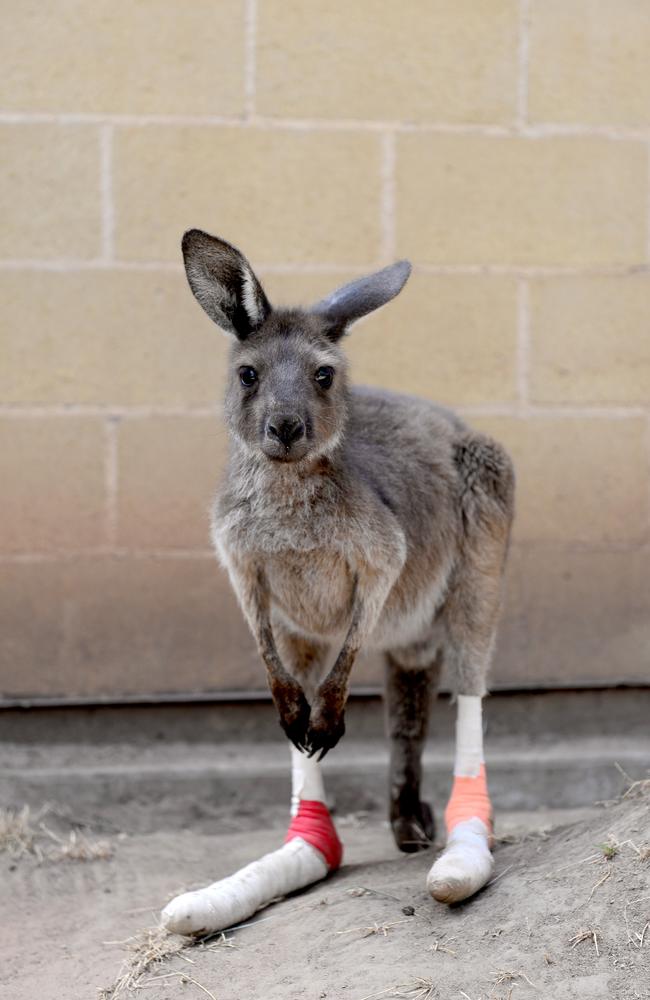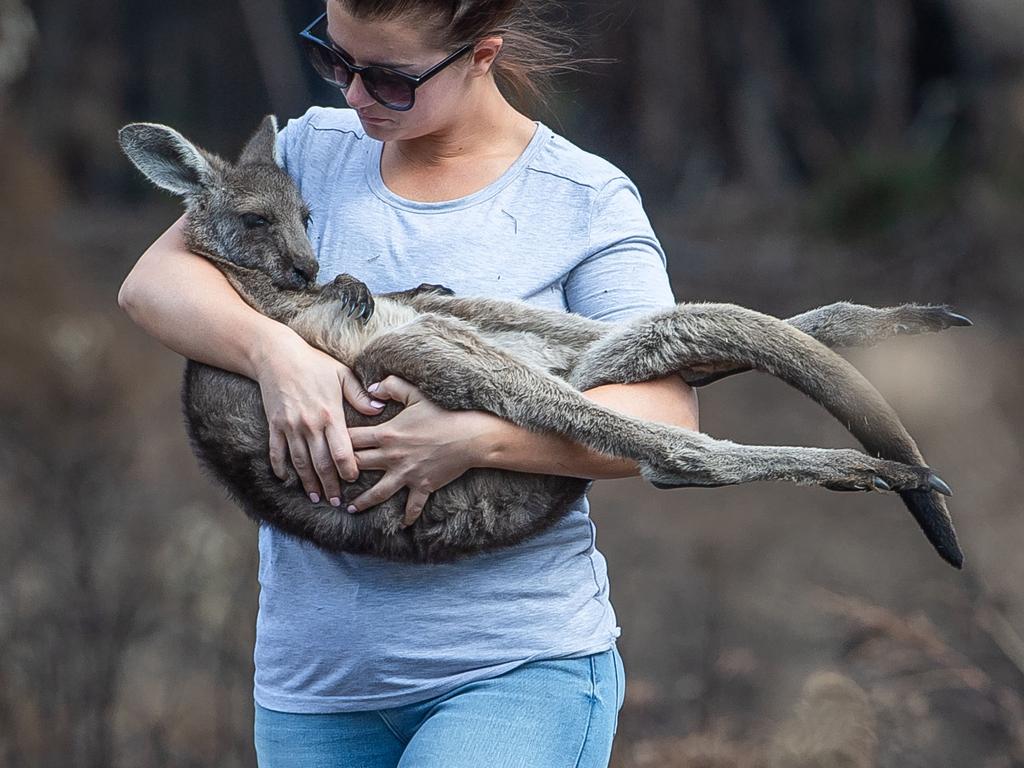More than one billion animals killed in Australian fires
After more than a billion perished in the flames, Australian animals face the threat of extinction as death tolls from the fires mounts.
The number of animals which have died in Australia’s bushfire season so far has now topped a billion, “hastening extinction” for some species.
University of Sydney scientist Professor Chris Dickman has revised his estimate of the number of animals killed in bushfires in NSW to more than 800 million animals, with a national figure of more than one billion animals.
Just weeks ago, Professor Dickman’s estimate was 480 million animals. But with fires continuing and their range extending, the animals perishing in their path has become part of a “monstrous event”.
For more updates on the Australian bushfires, follow our live blog.
RELATED: Millions of animals dead or euthanised
RELATED: Army to help bury dead animals, livestock
The koalas break my heart. 😢 💔🨠https://t.co/hIjOxXmHZa
— Latika M Bourke (@latikambourke) January 10, 2020

Professor Dickman told National Public Radio in America that the bushfires and their devastation was unprecedented.
“I think there’s nothing quite to compare with the devastation that’s going on over such a large area so quickly,” he said.
“It’s a monstrous event in terms of geography and the number of individual animals affected.”
“We know that Australian biodiversity has been going down over the last several decades, and it’s probably fairly well known that Australia’s got the world’s highest rate of extinction for mammals.
“It’s events like this that may well hasten the extinction process for a range of other species. So, it’s a very sad time.
“We’re probably looking at what climate change may look like for other parts of the world in the first stages in Australia at the moment.”
RELATED: School’s heartwarming attempt to save koalas


CRUNCHING THE NUMBERS
The figures of animals dying in the fires includes mammals (excluding bats), birds and reptiles, but does not include frogs, insects or other invertebrates.
Professor Dickman’s original figures were based on a 2007 report for the World Wide Fund for Nature (WWF) on the impacts of land clearing on Australian wildlife in NSW.
The authors of that report obtained estimates of mammal, bird and reptile population density in NSW and then multiplied the density estimates by the areas of vegetation to be cleared.
Estimates of density were obtained from published studies of mammals in NSW and from studies carried out in other parts of Australia in similar habitats to those present in NSW.
The authors deliberately employed highly conservative estimates in making their calculations. Based on that formula, the true mortality is likely to be substantially higher than those estimated.
Some 34 species and subspecies of native mammals have become extinct in Australia over the last 200 years, the highest rate of loss for any region in the world.


NYC KOALA CRUSADE
An organisation powered by Australians living in New York City is raising awareness and fund specifically for native wildlife.
The group – affectionately calling themselves Koalas of NYC – say NYC is “home to so many Australians who want to do everything they can from far away to help save their beloved country” and its endangered wildlife.
And a friend of my FB page just sent me this photo he took in NYC today. Seems like the Koalas are a thing. Anyone know who is behind them?#AustraliaBurns#AustraliaFires#Auspol pic.twitter.com/EOomBpHdUl
— Latika M Bourke (@latikambourke) January 10, 2020
“At 6am this morning, Friday, January 10, 2020, stuffed koalas plush toys were scattered and positioned in locations all over New York City,” a Koalas of NYC organiser shared.
“Attached to the koalas is a QR code that directs passerbyers to the Koalas of NYC Gofundme page to spread awareness and raise money for WIRES.”
At the time of writing, the page has raised $1,734 of their $10,000 target.



